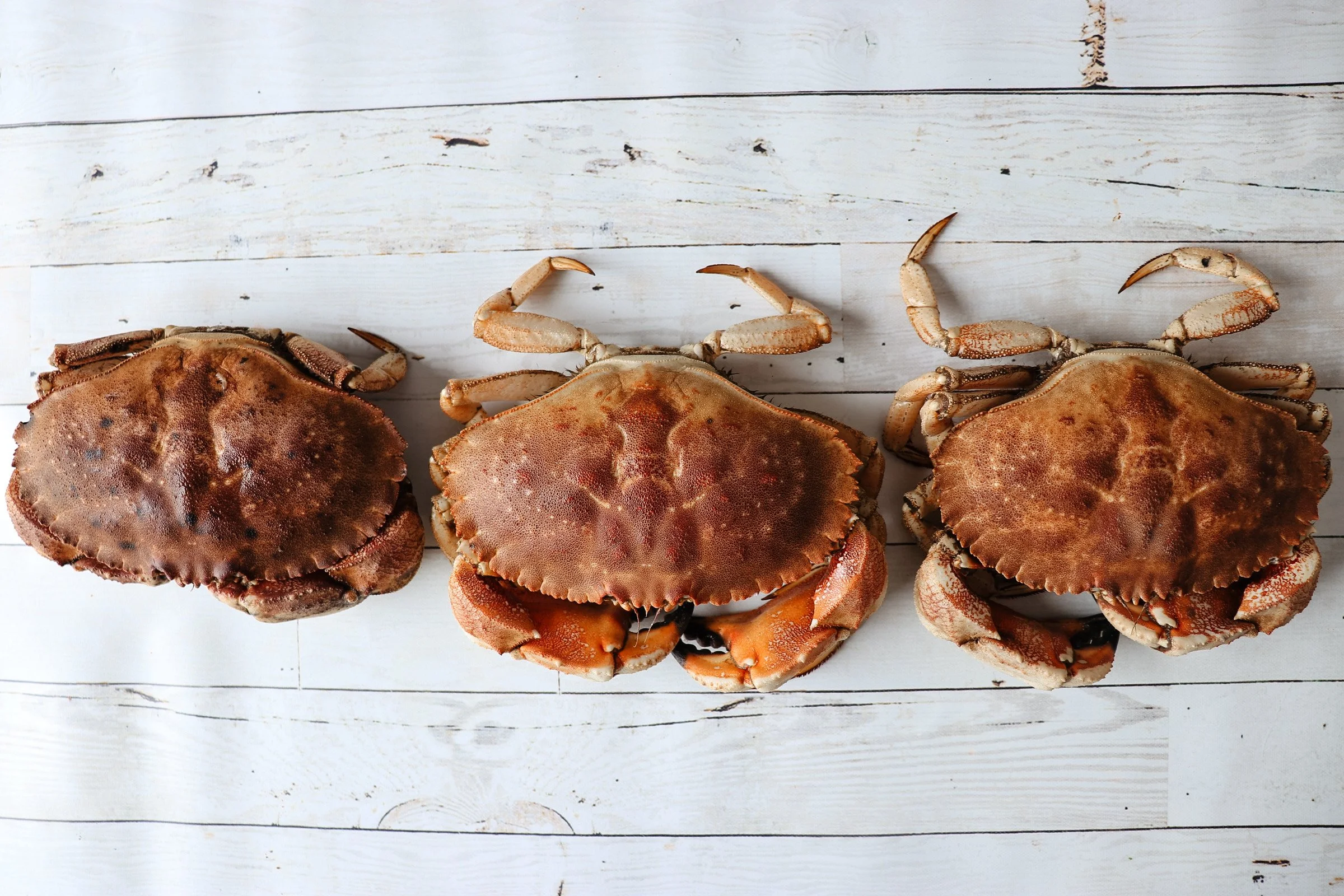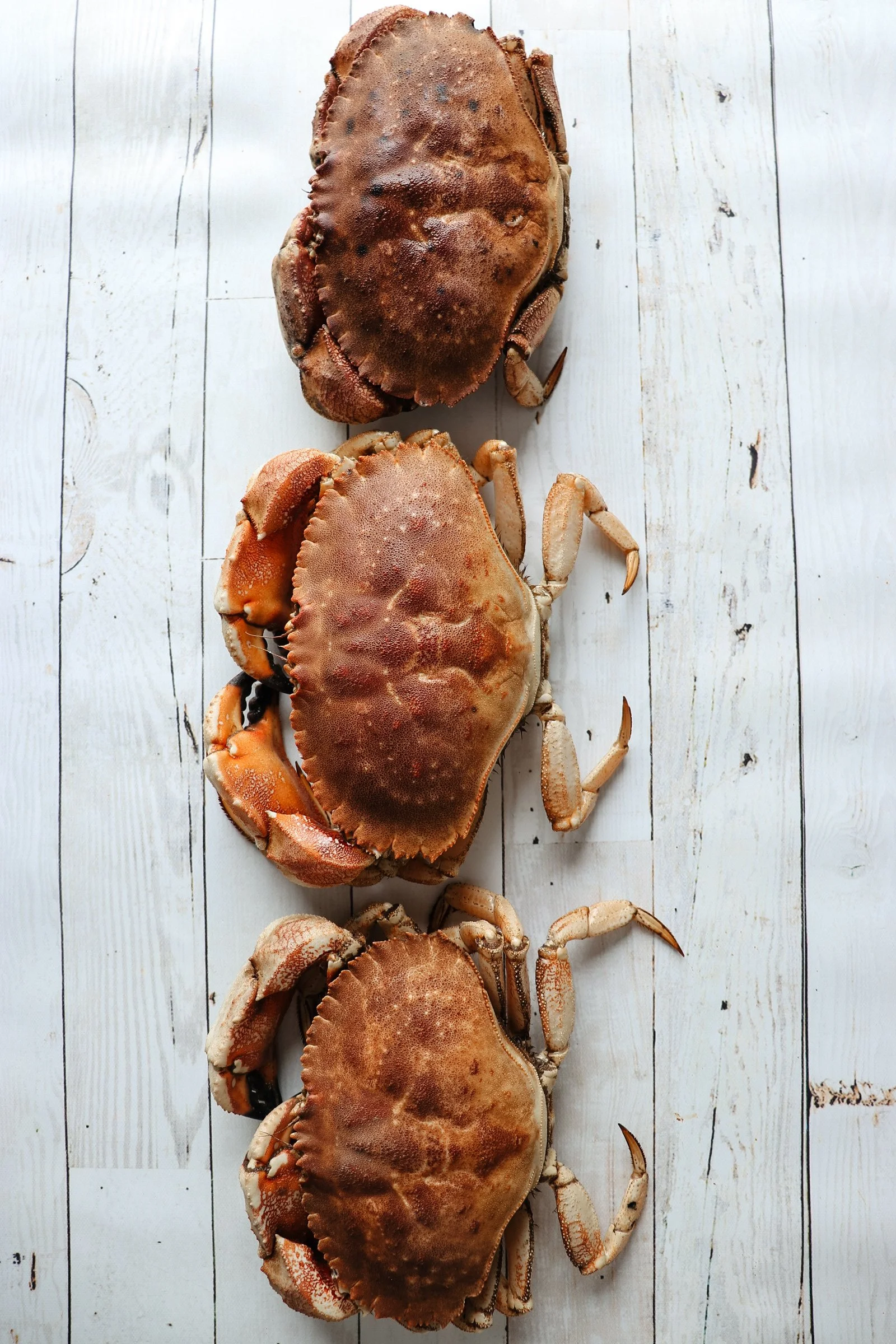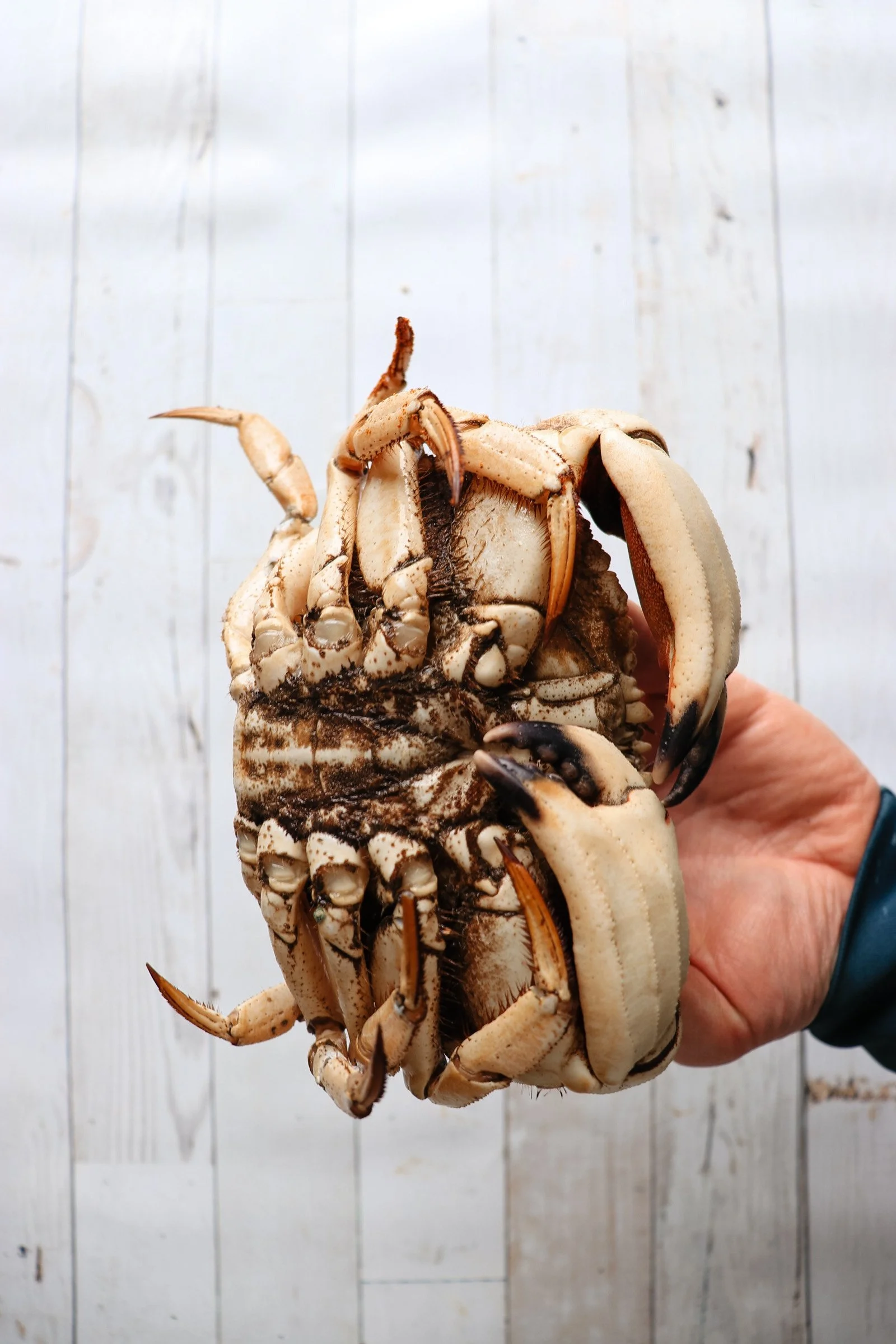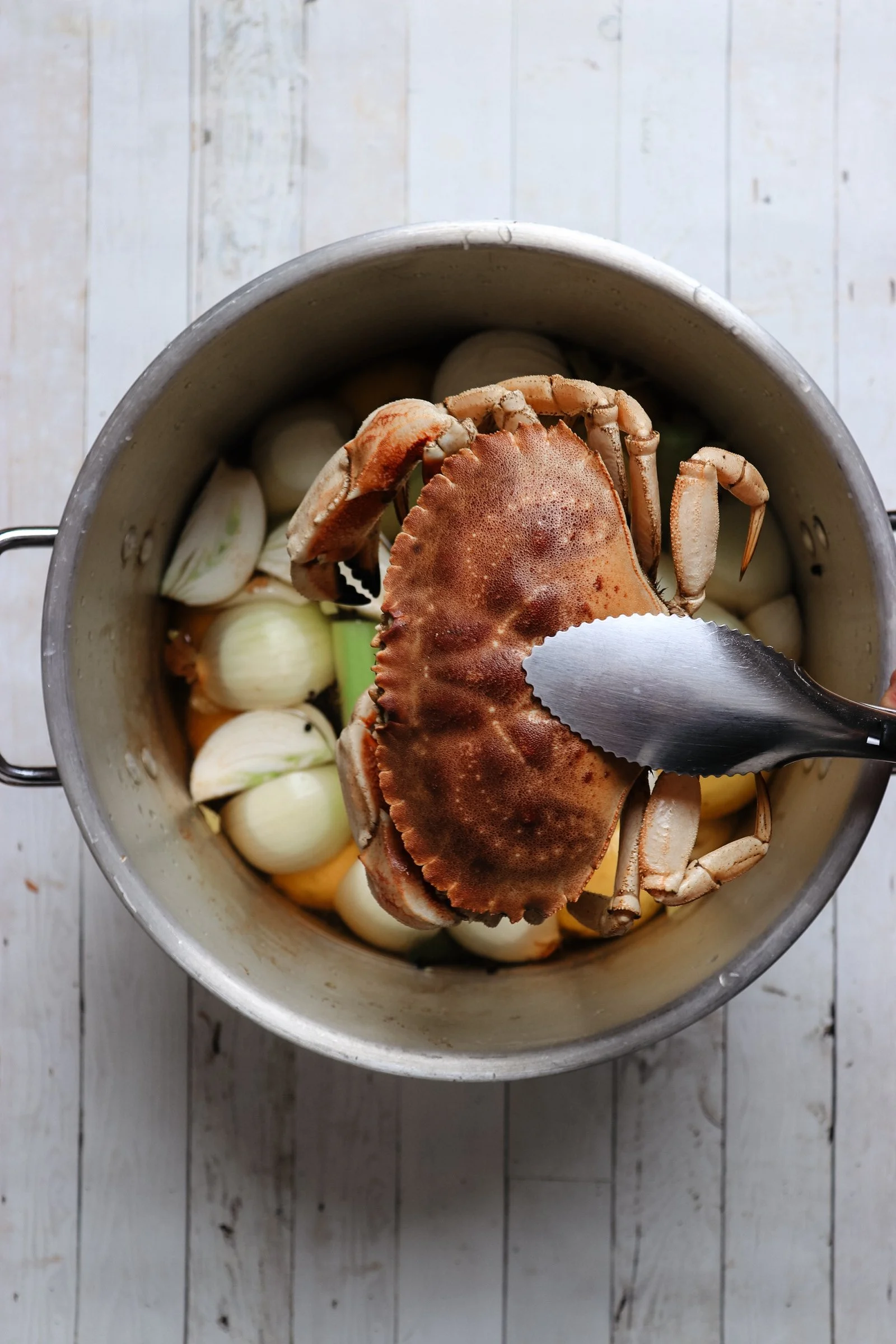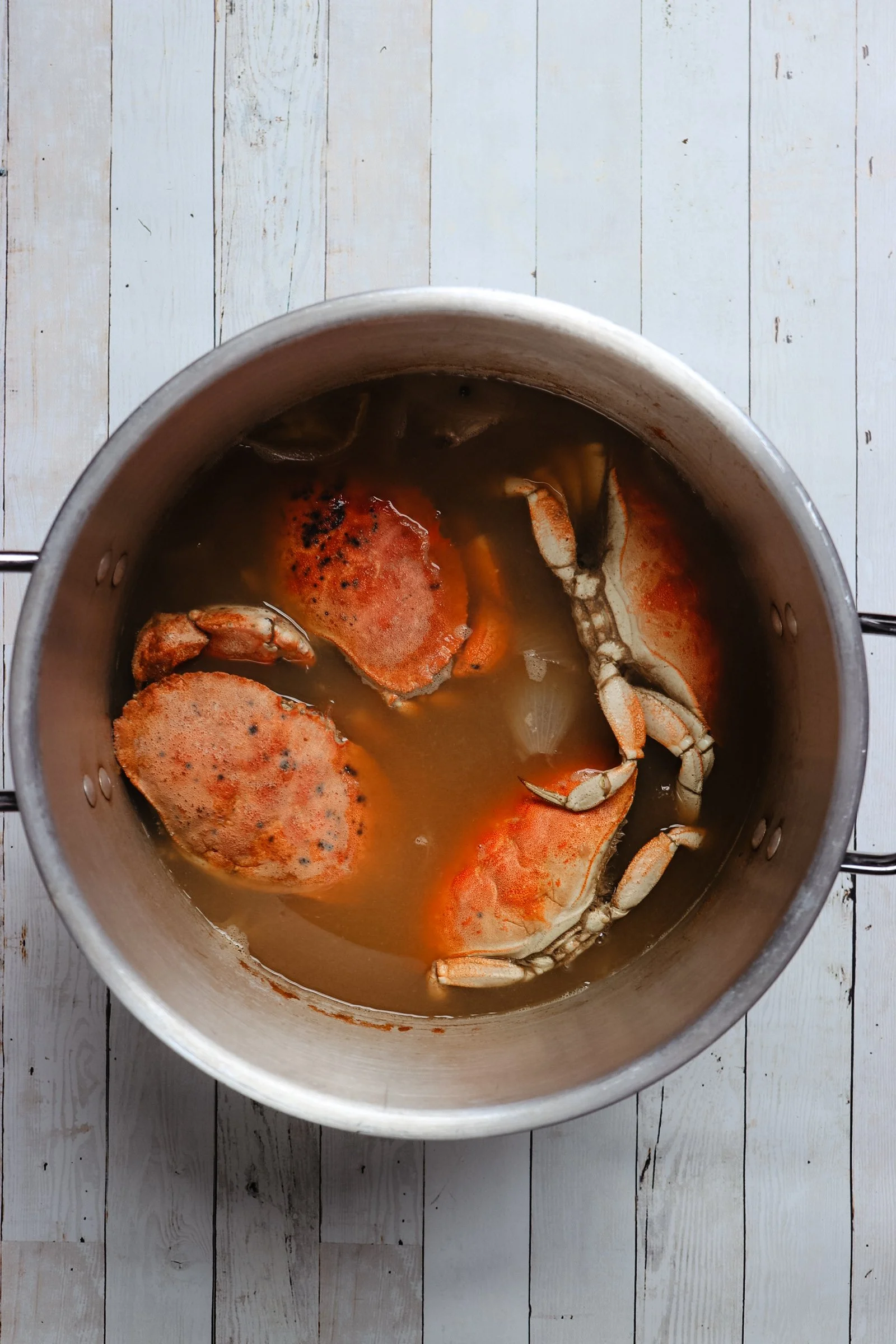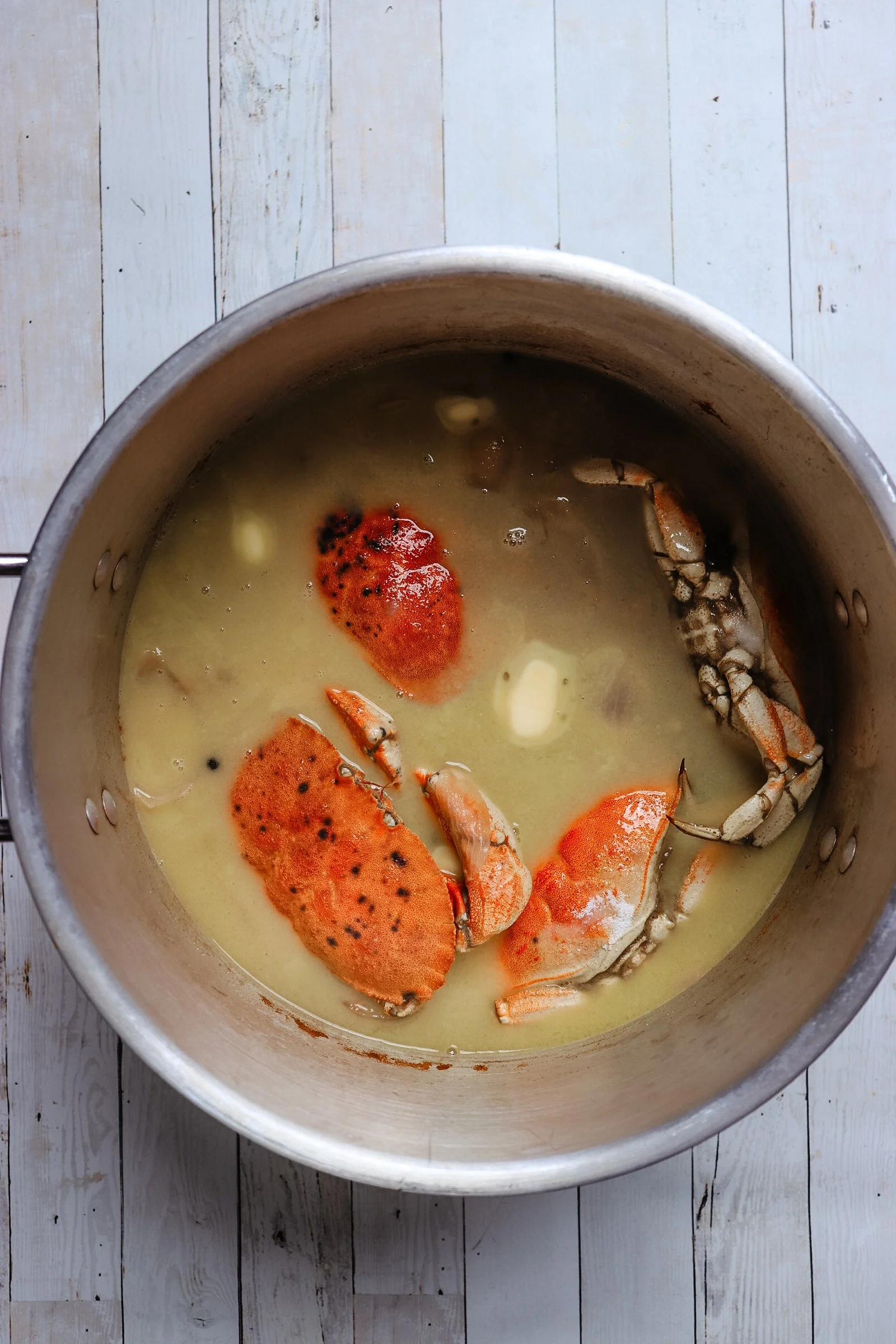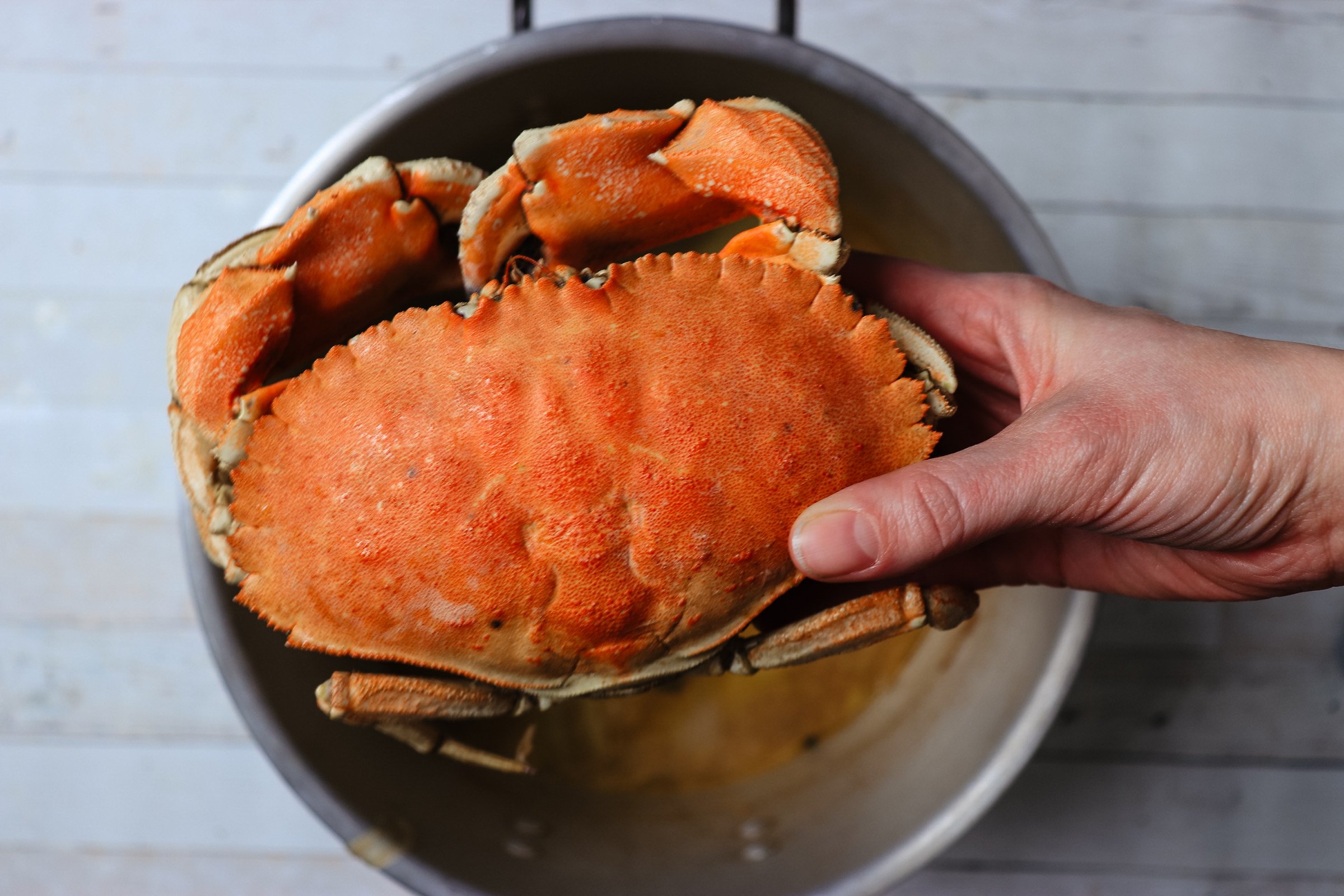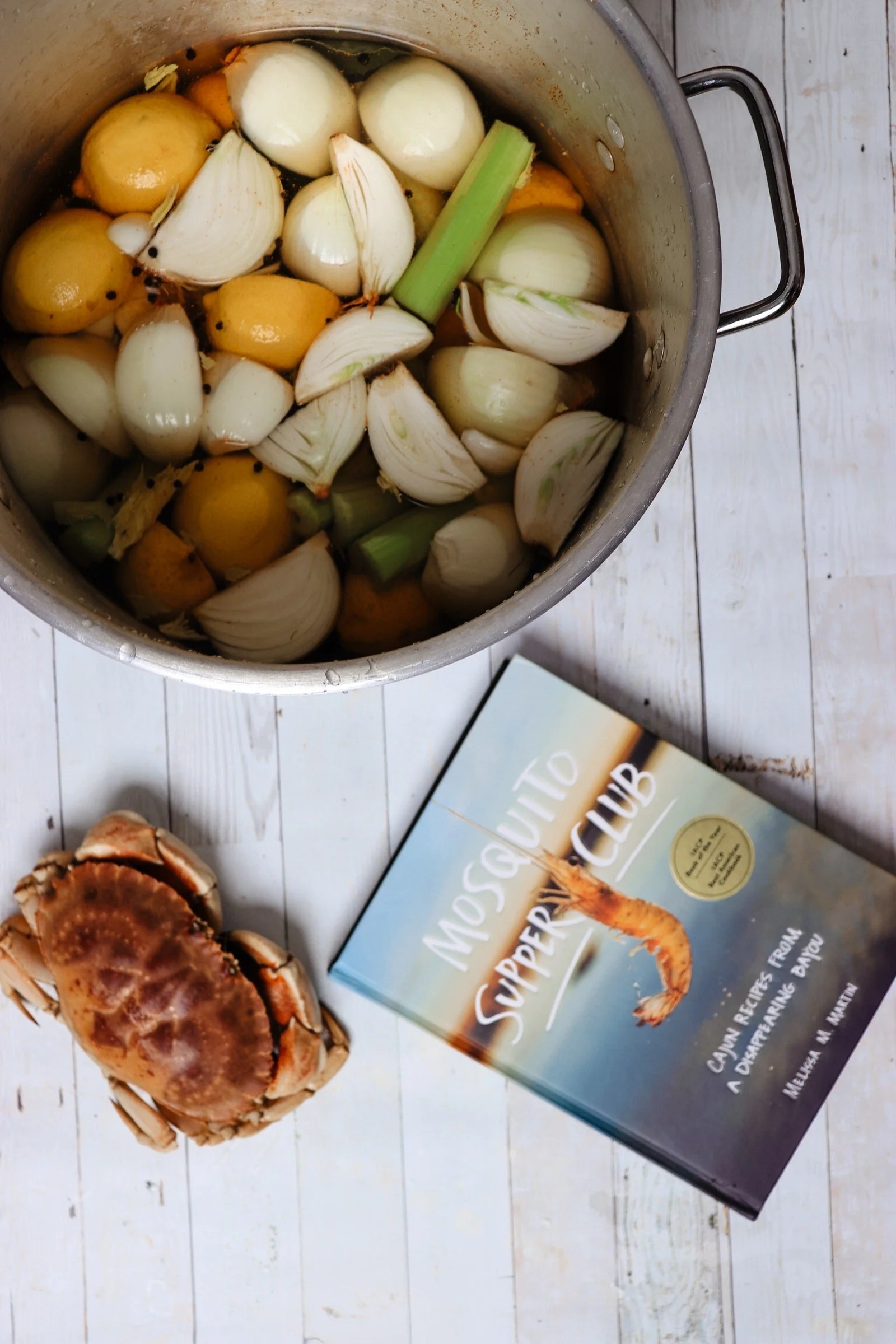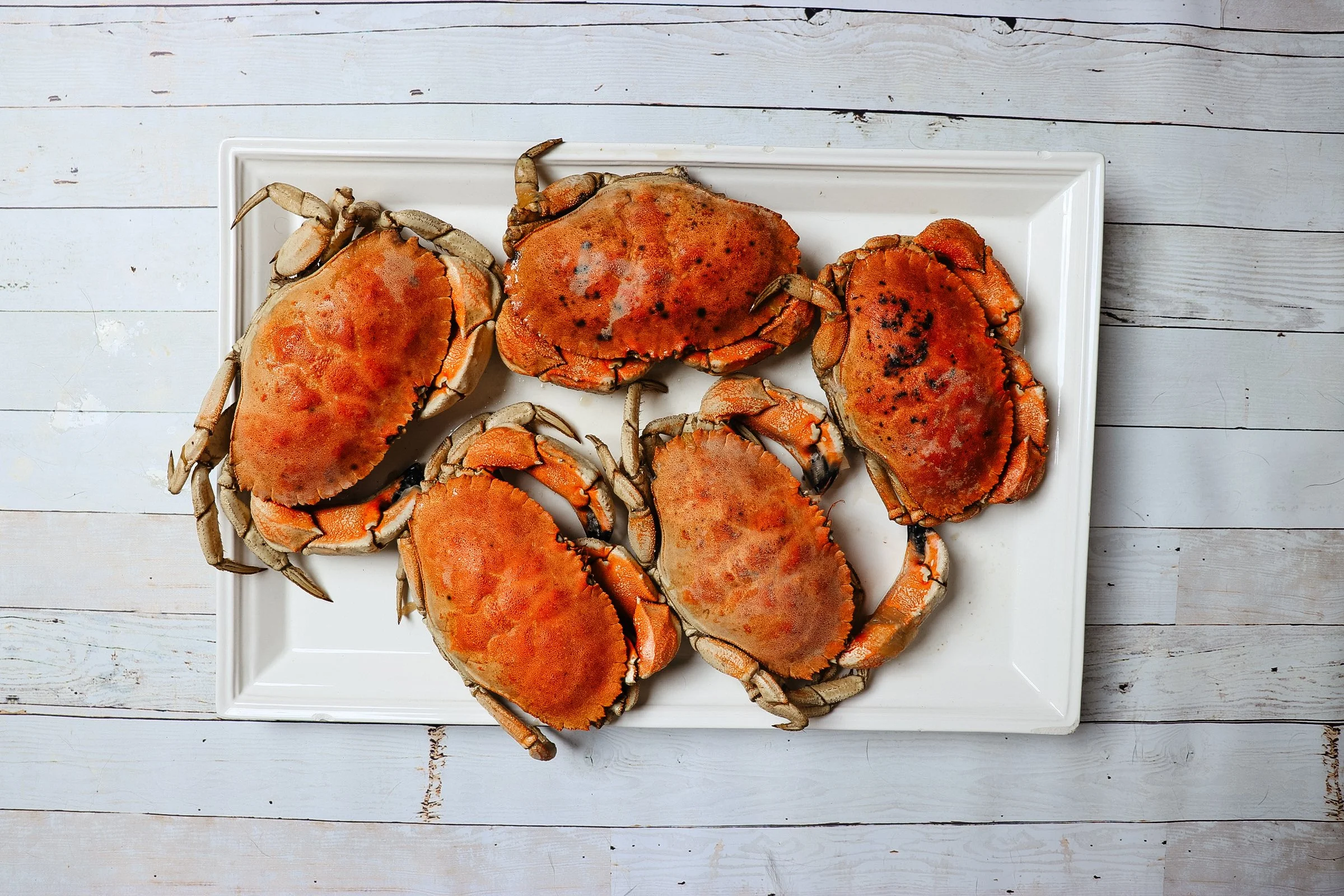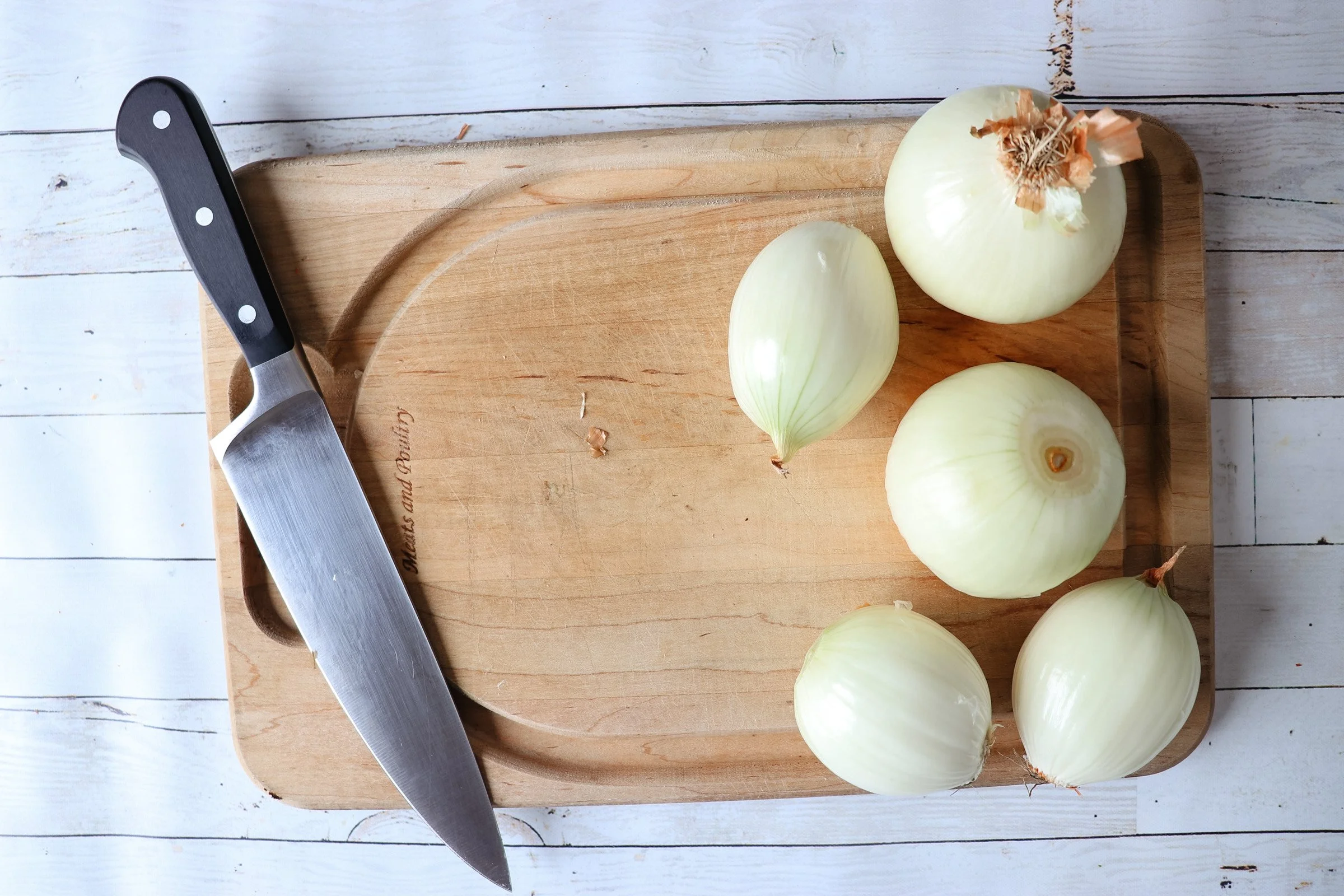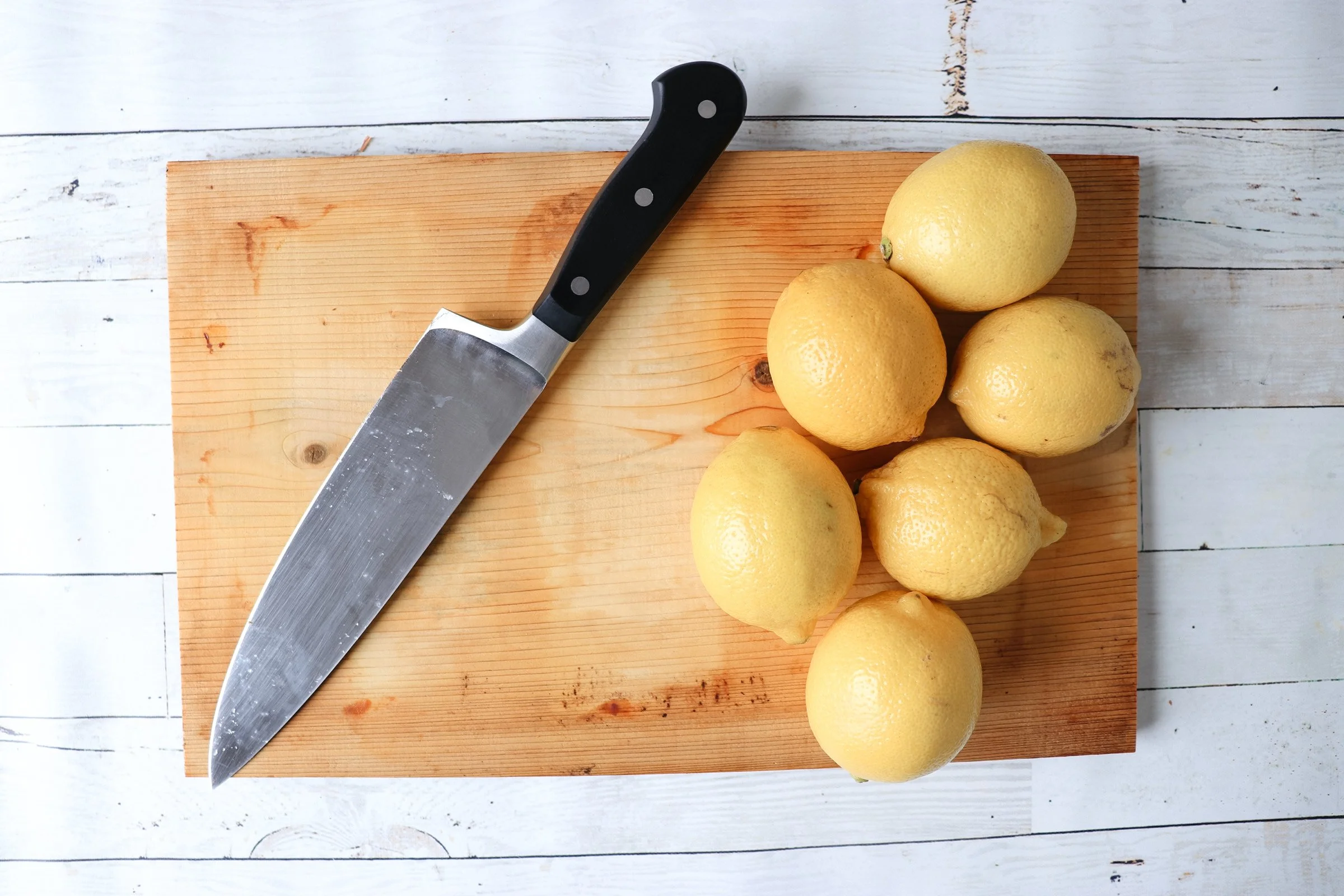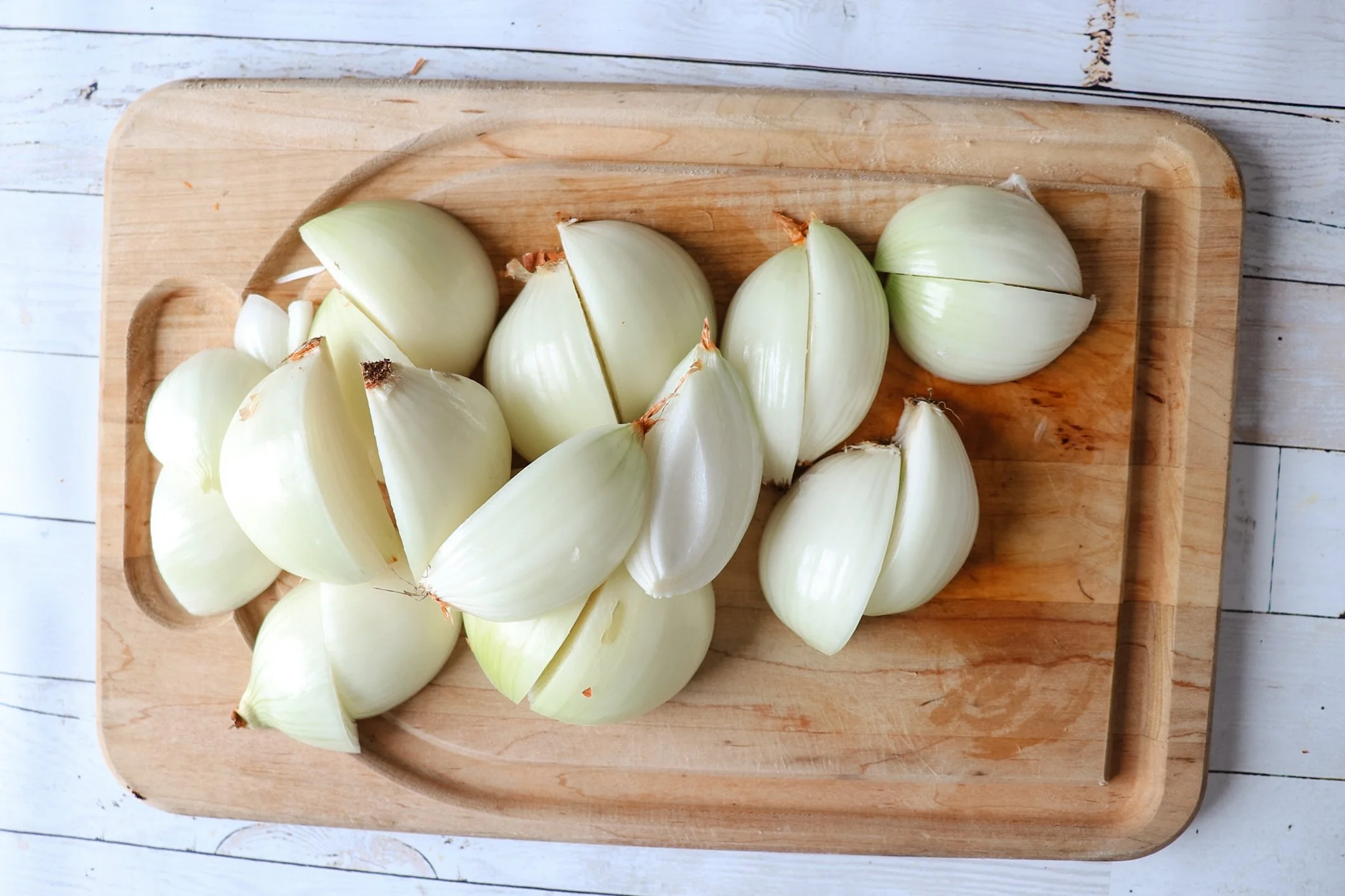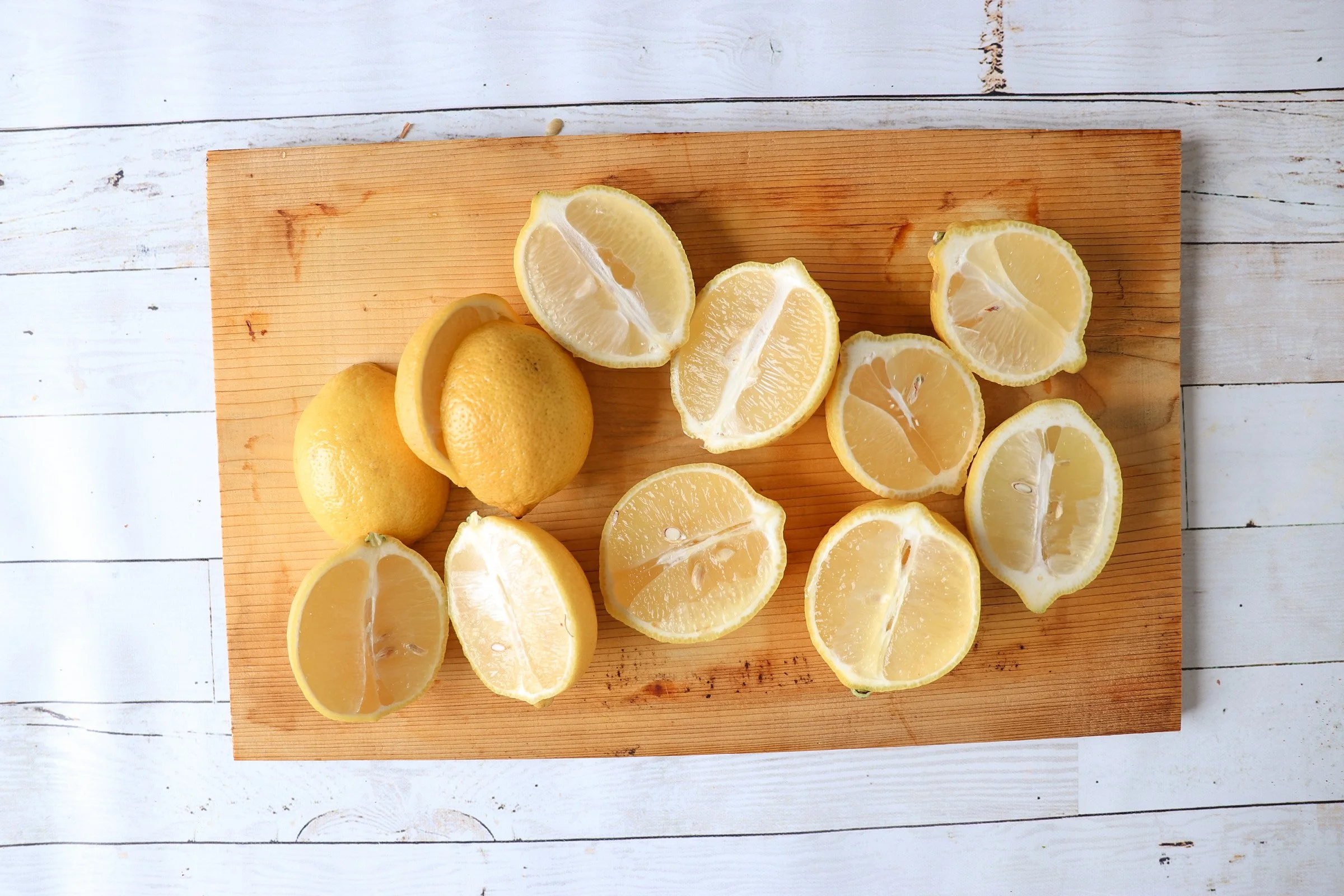How to Boil Crabs
This is a simple boil with onions, lemons, celery, and spices like cayenne, bay leaves, and black pepper—ingredients that enhance the crabs’ sweet, subtle essence.
In her cookbook Mosquito Supper Club, Chef Melissa Martin shared—
Crabs are the summer, held together by shell and seawater. They are poetry.
Crabs are a wonderfully versatile crustacean. You can steam them, stew them, boil them, roast them, or even grill them.
In regions such as the mighty Chesapeake or the bayous of Louisiana, crab boils are a wonderful celebration of local community, culture, and heritage. Folks sit together to slowly break down crabs, and make a meal of it. Usually the crabs are served with crackers, corn, or potatoes.
After the crabmeat gets picked, it is stored in the fridge or frozen to be used in cakes, patties, and bisques in the coming days. Leftover shells can be used to make savory crab butter or crab stock.
The Jonah crab (Cancer borealis) is a marine brachyuran crab that inhabits waters along the east coast of North America from Newfoundland to Florida.[2] Jonah crabs possess a rounded, rough-edged carapace with small light spots, and robust claws with dark brown-black tips.
t is widely accepted that this species moves offshore in the fall and winter, and females have been documented moving inshore in late spring and summer.[9] The Jonah crab is known to move to areas of preferred temperature for behavioral thermoregulation.[10] The preferred temperature of this animal changes depending on the temperature to which it is acclimated. The estimated average preferred temperature is 15.4 °C (59.7 °F).[10] Because Jonah crabs are a strongly preferred prey item for gulls, their survivorship is highest in deep water. However, some crabs will forage at shallower depths and in the intertidal zone, where food is more abundant. Due to the increased growth rate of crabs who forage at shallow depths and the higher survivorship of crabs who forage in deep water, both behaviors have a roughly equivalent effect on fitness.
Jonah crabs have long been caught as bycatch in lobster traps. Once, they were considered a nuisance and a pest that stole the bait in the traps and they were thrown back in the sea by many angry fishermen. In the past twenty years, particularly in New England, landings have increased due to increased fishing pressure and market demand. Landings of Cancer borealis in the United States rose from 2–3 million pounds annually in the 1990s to more than 17 million pounds in 2014. In 2014, 70.05% of landings came from Massachusetts, followed by Rhode Island with 24.43%. Jonah crabs are not managed federally in the United States, but instead are managed by individual states with interstate coordination by the Atlantic States Marine Fisheries Commission
The Jonah Crab's habitat stretches from the icy waters of Northeastern Canada all the way down to the Carolinas. The majority of its landings are in Prince Edward Island, Maine, and Rhode Island. In the past, these crabs were discarded as a by-catch of lobstering. Once the demand for the crabs increased, a devoted fishery was created. The harvesters began to catch the crabs in increased numbers using baited pots as they did in fishing lobsters.
The crabs follow a similar seasonality to lobster: they are at their best in the colder months. The colder water concentrates the natural sugars in the meat to give you a sweet and succulent bite. Its flavor is sweet like Pacific Dungeness crab with the firm yet delicate texture of the Florida Stone Crab. What is special about the Jonah is that the meat can be displayed and processed in many ways. Here are some popular products that are available both fresh and frozen.
For decades Jonah crab was one of New England's best kept secrets. It started as a bycatch— an accidental catch—of the lobster industry but as its popularity grew, fishermen began fishing for it not as a bycatch but as the catch. Harvested in the cold waters of the Gulf of Maine, Jonah crab has no shortage of culinary applications like crab cakes, rolls, chowder, or dip. Our Jonah crab is sold by the pound as meat and in our crab roll kits.
While rock crabs occasionally have been featured at high end restaurants, Jonah crabs currently support the larger fishery. In 2022, nearly 8 million pounds of Jonah crab, worth over $14 million, were landed in Massachusetts, making it the fifth most valuable fishery in the state. The rock crab fishery is much smaller. Just over 100,000 pounds of rock crab were landed in Massachusetts in 2022, with a value of less than $200,000. Both species are marketed live, or as fresh or frozen picked meat. Large Jonah crab claws, or “cocktail claws”, make a great appetizer. They can be found at seafood markets fresh or frozen, and pre-scored for easy cracking. In the mid-Atlantic, rock crabs are also sold as bait to catch tautog.
https://www.asmfc.org/species/jonah-crab

Boiled Crab
Ingredients
Instructions
- Fill a heavy-bottomed 4 gallon (15L) stockpot halfway with water. Add the celery, onions, lemons, bay leaves, cayenne, and peppercorn to the pot. Bring the water to a boil over high heat, then reduce the heat to low, and simmer until vegetables are soft, about 2 1/2 hours.
- Tate the stock; it should have a subtle bright vegetable flavor and taste clean, with hints of onion and celery. Simmer the stock longer if the vegetables need to release more flavor.
- Raise the heat to medium-high and return the stock to a boil. Add the crabs to the boiling stock, and use long tongs to press all the crabs underneath the liquid. Cover the pot, and let the stock come back to a boil. Once it does, cook the crabs until they are bright red-orange in color, about 15 minutes, depending on the size of the crab.
- Turn off the heat and add the butter and salt to the pot, stirring to melt the butter and dissolve the salt. Let the crabs soak in the stock for 15 minutes so they absorb flavor. Taste a crab by peeling one and trying the meat; if you think the meat needs more seasoning, add more cayenne and salt and soak for 5 to 10 minutes more, then taste again and repeat until the crabs are to your liking, up to 45 minutes total.
- Using tongs, transfer the crabs to a platter. Bring the stock back to a boil over high heat. Add the potatoes, and boil for 6 minutes, then add the corn and boil the vegetables together for 4 minutes more, until the potatoes are tender. Transfer the potatoes and corn to another platter and discard the stock.


